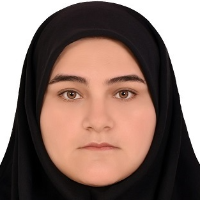Investigation on Conveyance Efficiency and Operation Issues of Precast Concrete Channels (Canalette) in Moghan Irrigation Network
Moghan irrigation network is also facing the problem of water losses similar to other projects. In recent years, more than 43,000 hectares of tertiary irrigation canals has been lined using precast concrete channels (Canalette). The main purposes of the project were; improving irrigation efficiency, increasing water use efficiency, reducing waiting period to get water, and preventing water loses. But the project due to weaknesses in various stages of design, construction, operation and maintenance were faced with numerous issues and problems. In this research, the performance of construction canalette in terms of conveyance efficiency and network operation and maintenance problems have been investigated.
To do this, 40 canalettes were chosen after various visits to the different projects area and reviewing the existing related documents. In order to calculate conveyance efficiency, the inflow and outflow values of the channels were measured. In order to estimate the waiting time for farmers to receive water, the time required for water to reach from the water dividing site to the field was measured. The amount of land losses in each project was determined according to the availability of information such as the length of the canalette and considering the average width of 2 meters for the canalette and also the specificity of the area covered by the projects. In addition, by taking photos, talking to farmers, water distributors and other relevant factors, exploitation and maintenance issues were investigated. Field observations from the study of technical and social issues, issues related to the operation and maintenance of the canalette network as well as the results of measurements were analyzed and then the necessary suggestions to improve the current situation are presented.
The average conveyance efficiency in the studied canalettes in the three studied projects, namely agro-industrial lands, return A canals and sub-A canal lands, respectively %89, %89.47 and %86.77, respectively. The results of the study of land losses in different projects showed that land losses in agro-industrial lands, which are segmentate in an integrated manner, are far less than farmers' lands (lands of return A canals and sub-A canal). The results of local visits regarding the issues and problems of maintenance and operation of canalettes are presented below.1) According to the visits and studies, the lack of complete sealing of the washers is one of the main problems of prefabricated canals. As a result of inadequate performance of the washers, unprincipled sealing performed by farmers in various ways, including the use of bitumen, concrete and plastic in the network was observed in large numbers. Investigation and research to solve this problem and improve existing channels and not to repeat this problem in future projects seems necessary.2) The climatic conditions of Moghan plain are such that weeds to grow in most of the soil canals and are widely seen in the network canals. Also, in canalettes, the growth of weeds around and along the canalette and sometimes even inside the canalette, creates problems in the process of water transfer and canalette life. In addition, the transfer of weed seeds from the canal to the fields by water causes damage to the fields.3) During the visits, several cases partial and total destruction at the network level were observed. Some of these cases were due to poor design and implementation of the canalette network and also lack of attention to the geotechnical conditions of the bed. However, most of the thematic demolitions have been done intentionally by the exploiters in order to dewatering of the network. The use of canalette siphons in irrigation sub-networks has been proposed as a simple and low-cost solution.
Based on the results, the average conveyance efficiency was found to be 89, 89.47 and 86.77 percents in three different studied areas that are agro-industrial lands, lands of return A canals and sub-A canal, respectively. Also, the waiting period of farmers and land losses were determined as 37 minutes in Km and 51.3 m2 per ha, respectively. Furthermore, inadequate performance seal washers, aquatic plant growth, damage of structures and intakes, improper operating, using overdesign rate of discharges, and other social and maintenances issues were found to be the problems in the operation of Moghan irrigation and drainage network
-
Investigating the Effect of sodium carbonate on the swelling and shrinking behavior of clay soils in Hydraulic Structures
Nader Abbassi *, Maral Sarkari, Afshin Khorsand, Reza Bahramlou
Irrigation and Drainage Structures Engineering Research, -
Investigating virtual water content and agricultural water productivity indicators in crops (Case study: Dehloran County, Ilam Province)
FATEMEH BASEREH *, , Mmohamdreza Sharifi
Journal of Water and Soil Management and Modeling, -
Estimating grain corn yield based on Landsat 8 satellite images(Case study: agricultural and industrial lands of Shahid Beheshti, Dezful)
Abdolmajid Liaghat *, Tahmine Dehghani, Hadi Rezaei Rad,
Iranian Journal of Irrigation & Drainage, -
A Review of Water Consumption Management Indicators of different Crops in Iran
Fariborz Abbasi *, M. Akbari, Abolfazl Nasseri, Nader Abbassi, J. Baghani, M. Joleini, Mohammadali Shahrokhnia, Mohammad Mehdi Nakhjavanimoghaddam, Saloome Sepehri Sadeghian, M. Moayeri, A.R. Hassanoghli, Abolghasem Haghayeghi, Ali Ghadami Firouzabadi, Syeed Hassan Mousavifazl, M.R. Yazdani
Irrigation and Drainage Structures Engineering Research, -
Field Evaluating the Efficacy of Geomembrane Covers in Mitigating Water Leakage in Moghan Irrigation Network Channels
Karamat Akhavan *, Milad Kheiry Goje Biglo, Majid Mardpour, Farhoud Kalateh
Irrigation and Drainage Structures Engineering Research, -
Application of Monte Carlo simulation (MCS) and Fuzzy Finite Element (FFEM) for Investigating the Uncertainty of Seepage in Homogeneous Earth dams
Milad Kheiry, Farhoud Kalateh *
Journal of Modeling in Engineering, -
Investigating virtual water content and physical and economic water productivity indicators in crops (Case study: Moghan irrigation network, Ardabil province)
Karamat Akhavan Giglou *, Milad Kheiry, , Salim Abbasi, Farhoud Kalateh
Journal of Water and Soil Management and Modeling,





